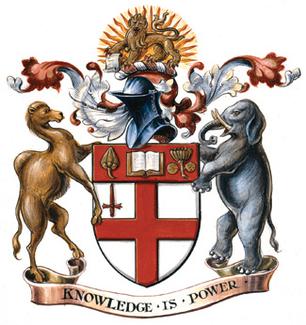
SOAS University of London is a public research university in London, England, and a member institution of the federal University of London. Founded in 1916, SOAS is located in the Bloomsbury area of central London.

The British Academy for the Promotion of Historical, Philosophical and Philological Studies is the United Kingdom's national academy for the humanities and the social sciences. It was established in 1902 and received its royal charter in the same year. It is now a fellowship of more than 1,000 leading scholars spanning all disciplines across the humanities and social sciences and a funding body for research projects across the United Kingdom. The academy is a self-governing and independent registered charity, based at 10–11 Carlton House Terrace in London.

Japan–United Kingdom relations are the bilateral and diplomatic relations between Japan and the United Kingdom.
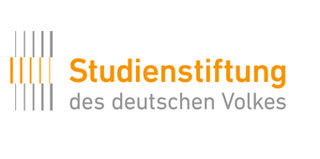
The German Academic Scholarship Foundation is Germany's largest and most prestigious scholarship foundation. According to its statutes, it supports "the university education of young people who, on account of their exceptional academic or artistic talents and their personalities, can be expected to make an outstanding contribution to society as a whole". The Studienstiftung is non-political, non-denominational and ideologically independent. Its headquarters are located in Bonn; it also has an office in Berlin. The current president is University of Bonn director Michael Hoch, and its patron (Schirmherr) is the President of Germany, Frank-Walter Steinmeier.

An Artist of the Floating World (1986) is a novel by British author Kazuo Ishiguro. It is set in post-World War II Japan and is narrated by Masuji Ono, an ageing painter, who looks back on his life and how he has lived it. He notices how his once-great reputation has faltered since the war and how attitudes towards him and his paintings have changed. The chief conflict deals with Ono's need to accept responsibility for his past actions, rendered politically suspect in the context of post-War Japan. The novel ends with the narrator expressing good will for the young white-collar workers on the streets at lunchbreak. The novel also deals with the role of people in a rapidly changing political environment and with the assumption and denial of guilt.
The Fifty-Three Stations of the Tōkaidō, in the Hōeidō edition (1833–1834), is a series of ukiyo-e woodcut prints created by Utagawa Hiroshige after his first travel along the Tōkaidō in 1832.
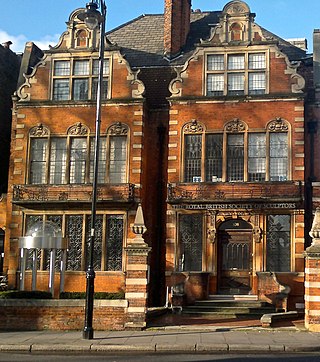
The Royal Society of Sculptors (RSS) is a British charity established in 1905, which promotes excellence in the art and practice of sculpture. Its headquarters are a centre for contemporary sculpture on Old Brompton Road in South Kensington, London. It is the oldest and largest organisation dedicated to sculpture in the UK. Until 2017, it was known as the Royal British Society of Sculptors.
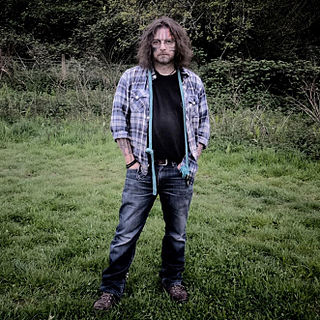
Ian McKay is a British writer, art critic, publisher and translator. A former editor of Contemporary Art magazine, and the founder-editor of The Journal of Geography and Urban Research, throughout the 1990s he was best known for his writings on the arts of Eastern Europe, being cited as the first British art critic to emphasize the negative impact of the western art market in that region. Throughout the 1990s and early-2000s, he was a contributor to a wide range of art journals, as well as writing on subjects relating to photography, cinema, and music. Since 2007 his publishing activities have mainly centred on UK Rural Affairs, and the environment however. Though periodically he continues to publish works of art criticism, his most recent publications concern social justice in rural Britain, as well as environmental conservation in the wider European sphere. He has also worked as an academic in several UK universities.

Edmund Arthur Lowndes de Waal, is a contemporary English artist, master potter and author. He is known for his large-scale installations of porcelain vessels often created in response to collections and archives or the history of a particular place. De Waal's book The Hare with Amber Eyes was awarded the Costa Book Award for Biography, Royal Society of Literature Ondaatje Prize in 2011 and Windham–Campbell Literature Prize for Non-Fiction in 2015. De Waal's second book The White Road, tracing his journey to discover the history of porcelain was released in 2015.
Founded in the aftermath of the First World War, the Anglo-Swedish Society was established to foster greater understanding and friendship between Britain and Sweden. The continued strong bond between these two nations has allowed the Society to evolve into a non-profit organisation that promotes intellectual and cultural crossover by organising prestigious events and supporting scholarships of the arts. A bridge in the English and Swedish calendars, the Anglo-Swedish Society in London has celebrated the strong bond between the two nations since 1918.
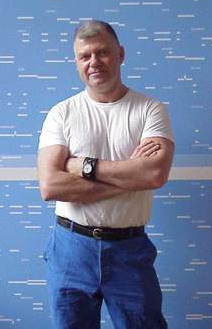
Keith Milow is a British artist. He grew up in Baldock, Hertfordshire, and lived in New York City (1980–2002) and Amsterdam (2002–2014), now lives in London. He is an abstract sculptor, painter and printmaker. His work has been characterised as architectural, monumental, procedural, enigmatic and poetical.

Pushkin House, established in 1954, is the UK's oldest independent Russian cultural centre, now based in Bloomsbury, London. It was founded by a group of émigré Russian friends, led by Maria Mikhailovna Kullmann (Zernova), with the aim of creating a welcoming meeting-place "for the enjoyment, understanding and promotion of Russian culture in all its forms, and for the exchange of views in a lively, informal atmosphere, with freedom of speech a core principle".
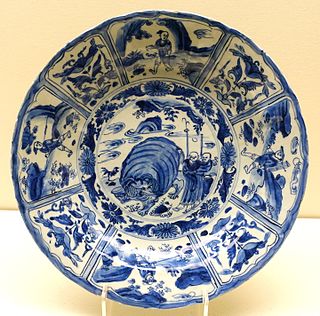
The Oriental Ceramic Society (OCS) is one of the leading international societies for the study and appreciation of Asian art, with a special interest in ceramics. However its wider focus is the study and appreciation of all aspects of oriental art, and over the last 90 years has served as one of the main bodies assisting the understanding of oriental art, and oriental ceramics in particular, by means of organising regular meetings, lectures and publications.
Nigel Caple is a British artist and lecturer.

Carl Randall is a British figurative painter, whose work is based on images of modern Japan and London.
Mark Neville is a British social documentary photographer.
Alexandra Munroe is an American curator, Asia scholar, and author focusing on art, culture, and institutional global strategy. She has produced over 40 exhibitions and published pioneering scholarship on modern and contemporary Asian art. She organized the first major North American retrospectives of artists Yayoi Kusama (1989), Daido Moriyama (1999), Yoko Ono (2000), Mu Xin (2001), Cai Guo-Qiang (2008), and Lee Ufan (2011), among others, and has brought such historic avant-garde movements as Gutai, Mono-ha, and Chinese conceptual art, as well as Japanese otaku culture, to international attention. Her project Japanese Art after 1945: Scream Against the Sky (1994) is recognized for initiating the field of postwar Japanese art history in North America. Recently, Munroe was lead curator of the Guggenheim’s exhibition, Art and China after 1989: Theater of the World, which the New York Times named as one of 2017’s top ten exhibitions and ARTnews named as one of the decade’s top 25 most influential shows. Credited for the far-reaching impact of her exhibitions and scholarship bolstering knowledge of postwar Japanese art history in America and Japan, she received the 2017 Japan Foundation Award and the 2018 Commissioner for Cultural Affairs Award, both bestowed by the government of Japan.

Kate Groobey is a British artist based in South Yorkshire and the South of France.
Hitomi Hosono is a London-based ceramicist who won the inaugural Perrier-Jouët Arts Salon Prize. She is known for intricate ceramic pieces that are inspired by botanical studies and her memories of the Japanese landscape and the greenery of East London.














